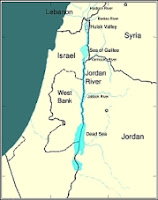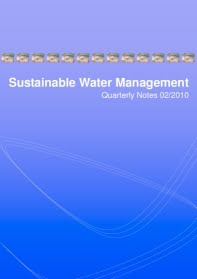Quarterly Notes on Sustainable Water Management - Q04/2010: released

The fourth issue of the Quarterly Notes on Sustainable Water Management - Q04/2010 has been released. Please feel free to download the Notes from here: http://swm-group.blogspot.com/p/downloads.html . If you encounter any problems accessing the Notes please request a free copy of the Notes from: swm.group@gmx.net . You are also invited to forward the download link to further interested stakeholders and/or inform others about the S ustainable | W ater | M anagement | G roup. CONTENT What can you expect from the fourth issue of the Notes? The layout of the Notes has been modified once more. The Notes now come with a navigation feature, facilitating the access to the various sections. The event calendar section has been amended with detailed conference announcements and a new text element - the Key Note - has been added to the Notes. Having the significant troubles associated with the most recent financial crisis in mind, this fourth issue is mainly dedicated to the economic aspect











